Beckermet detectorist celebrates latest treasure find
- Published

Justin Bell is an assistant headteacher and keen metal detectorist
A metal detectorist is celebrating after 10 coins found during a charity dig were ruled to be treasure.
Assistant headteacher Justin Bell discovered the coins from the reigns of Henry VIII to James I near a farm in Cumbria in June 2019.
Cumbria's assistant coroner Margaret Taylor declared them treasure and said they were "absolutely remarkable".
The Beacon Museum in Whitehaven has said it wants to add the coins to its collection.
Mr Bell, from Beckermet, said he started metal detecting in 2012 after being inspired by his history enthusiast grandfather Ted Holliday.

The coins date from the reigns of Henry VIII to James 1
He said he has now found five hoards, including a Viking set which has already been put on display by the Beacon Museum and some Charles I coins still waiting to be processed which he said were the first of the executed monarch's to be found in Cumbria.
The 10 post-medieval coins now declared treasure were found when Mr Bell and several other enthusiasts took part in a charity fundraising dig at a farm in the Haile area in June 2019, the inquest heard.
Mr Bell said he found the first coin was about 15in (38cm) below the surface with the others in close proximity, adding they were "beautiful".
The hoard included a Henry VIII half groat which was "unique to Canterbury" and made between 1526 and 1532, thee Elizabeth I sixpences and two shillings from between the 1570s and 1590s and three James I shillings and a sixpence from 1603 to 1609, the inquest heard.
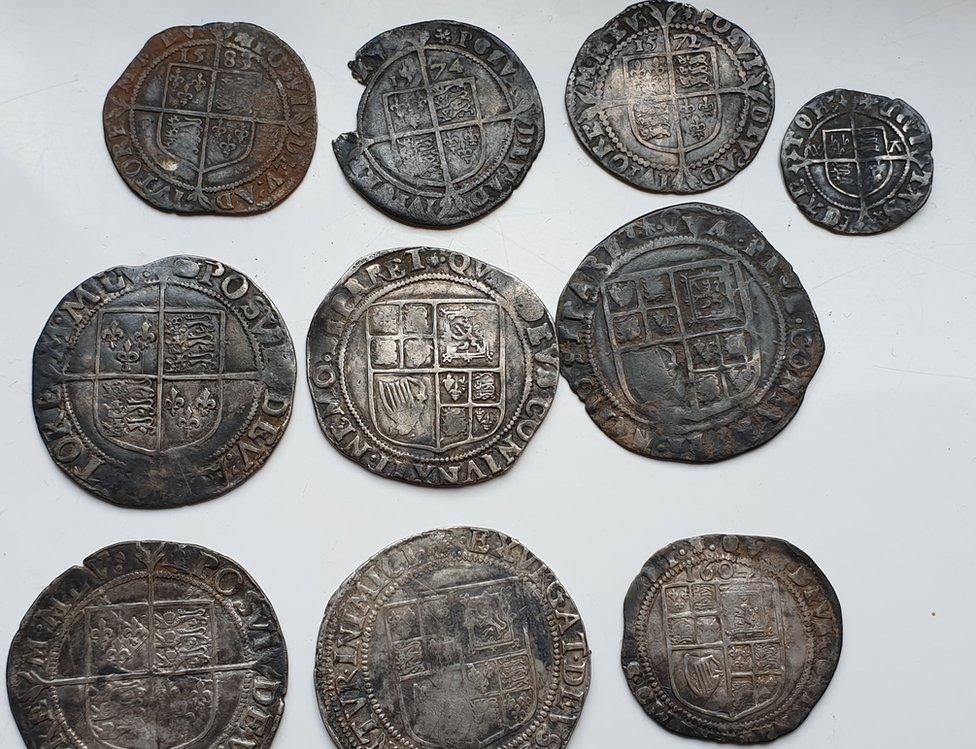
The coins are thought to have been someone's savings
In a report, coin expert Carl Savage estimated the coins had been "deposited" in about 1609 and the presence of the-then nearly 80-year-old Henry VIII half groat suggested it was a "savings hoard assembled over a long period of time".
Ms Taylor said because the coins were over 300 years old, contained more than 10% precious metal and were found together they constituted treasure.
"It's an absolutely remarkable find," she said, adding to Mr Bell: "All I can say is well done."
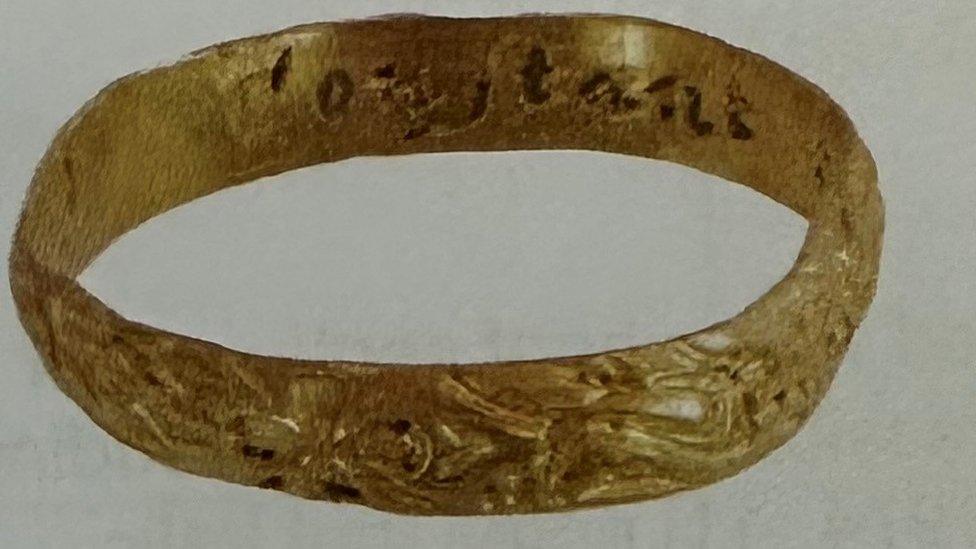
Three other finds were also declared as treasure including a gold posy ring
Mr Bell said finding the coins was an "amazing feeling" and he looked forward to taking his grandchildren to see them at the museum.
"It's good to have your name in history," he said.
Three other Cumbrian finds were also declared treasure by Ms Taylor in separate inquests at Cockermouth Coroner's Court.
They included:
A silver gilt heart-shaped pendant found by Peter Major in Baycliff in October 2020 dated between 1500 and 1600
A gold posy ring found in Barton in November 2022 featuring a hound chasing hares and an inscription reading "constant in affection" which would have been given as an expression of love, for a wedding or to "show regard or friendship"
Two half groats - one Elizabeth I minted at the Tower of London in 1582 or 1583 and the other James I from 1607 to 1609 - found by Stuart Peacock in Cockermouth in October 2019
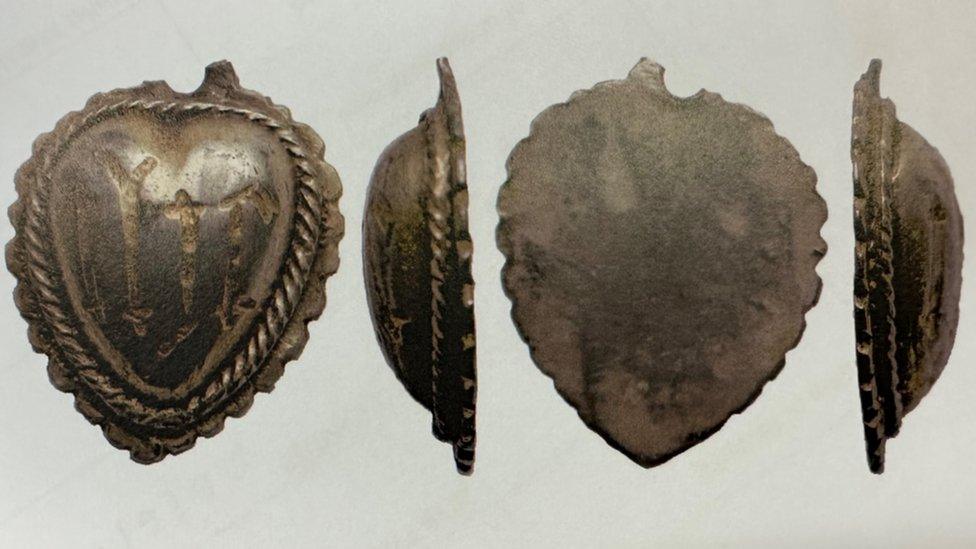
A pendant was also declared treasure

Follow BBC North East & Cumbria on Twitter, external, Facebook, external and Instagram, external. Send your story ideas to northeastandcumbria@bbc.co.uk, external.
Related topics
- Published31 March 2023
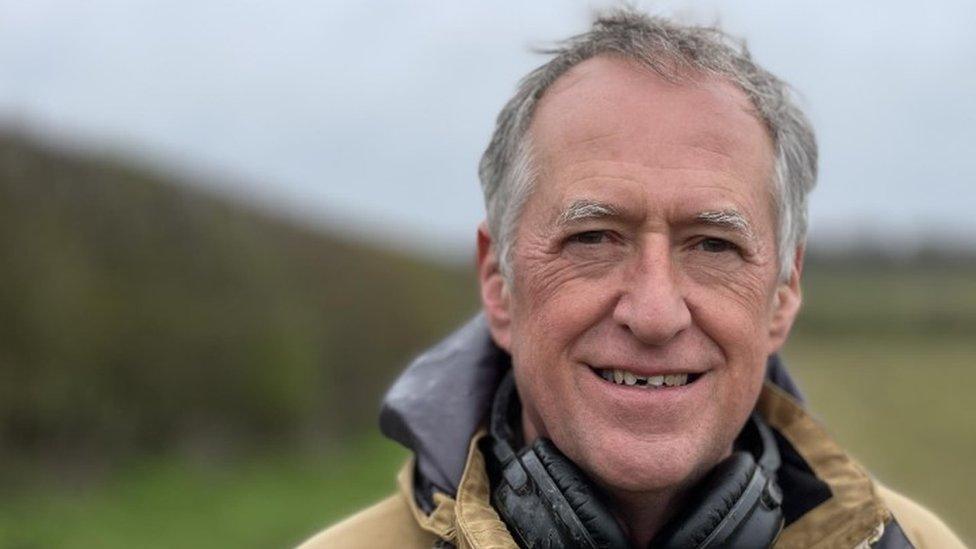
- Published2 February 2022
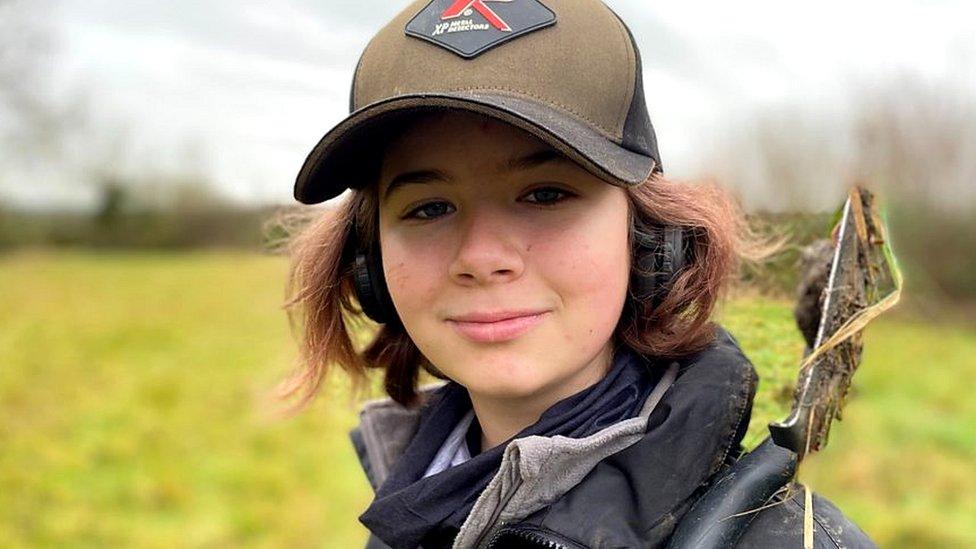
- Published4 September 2021
